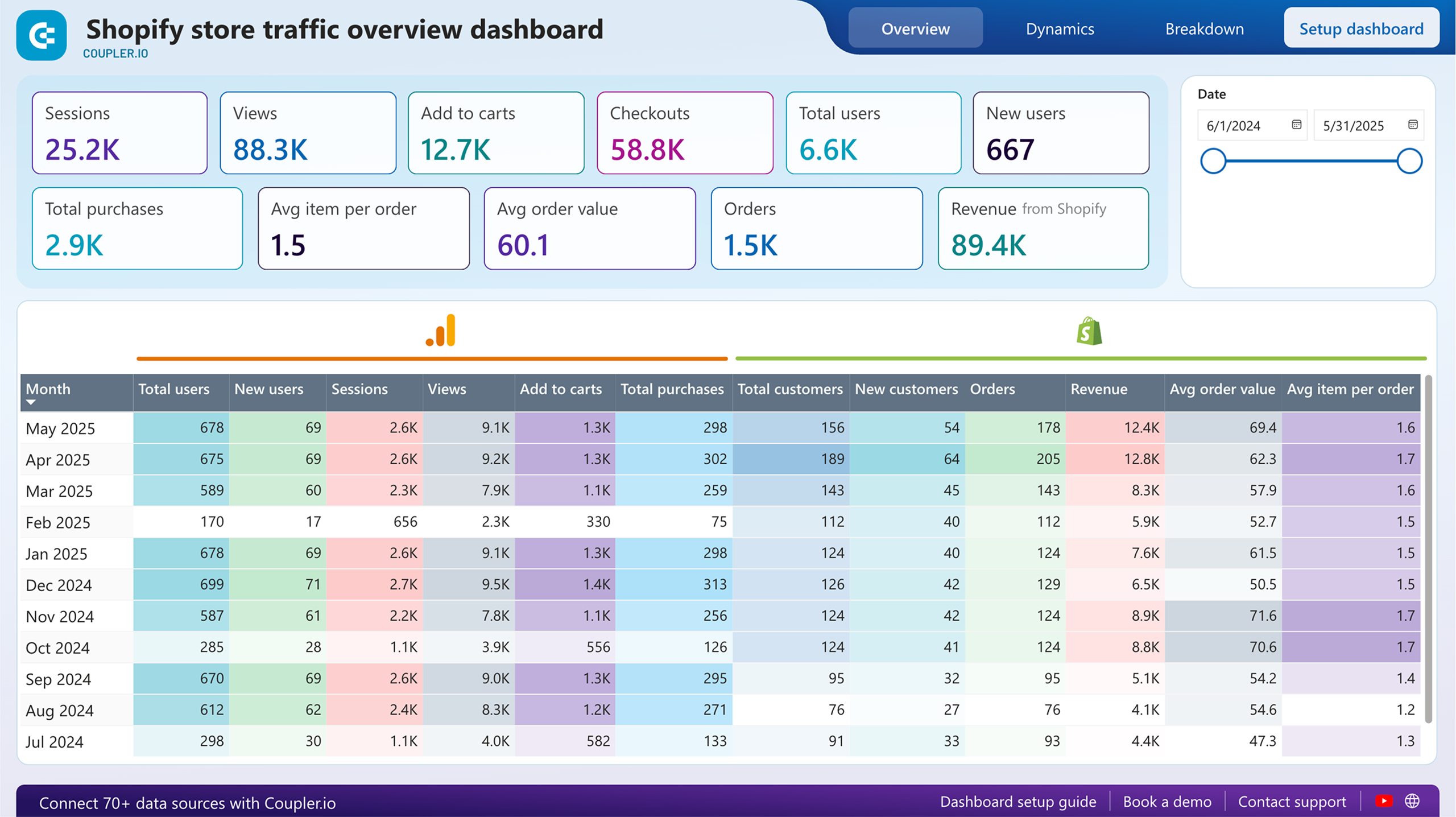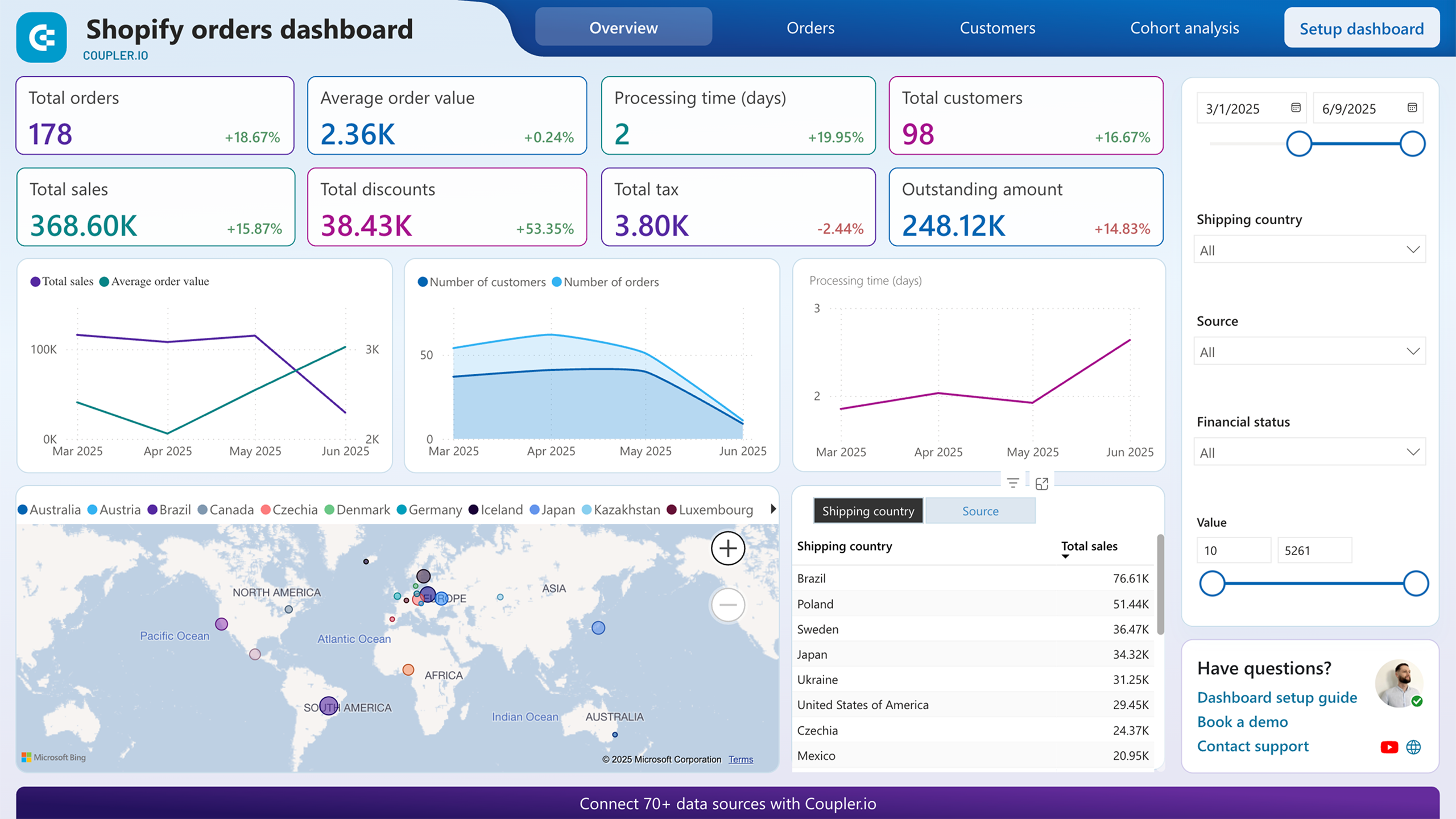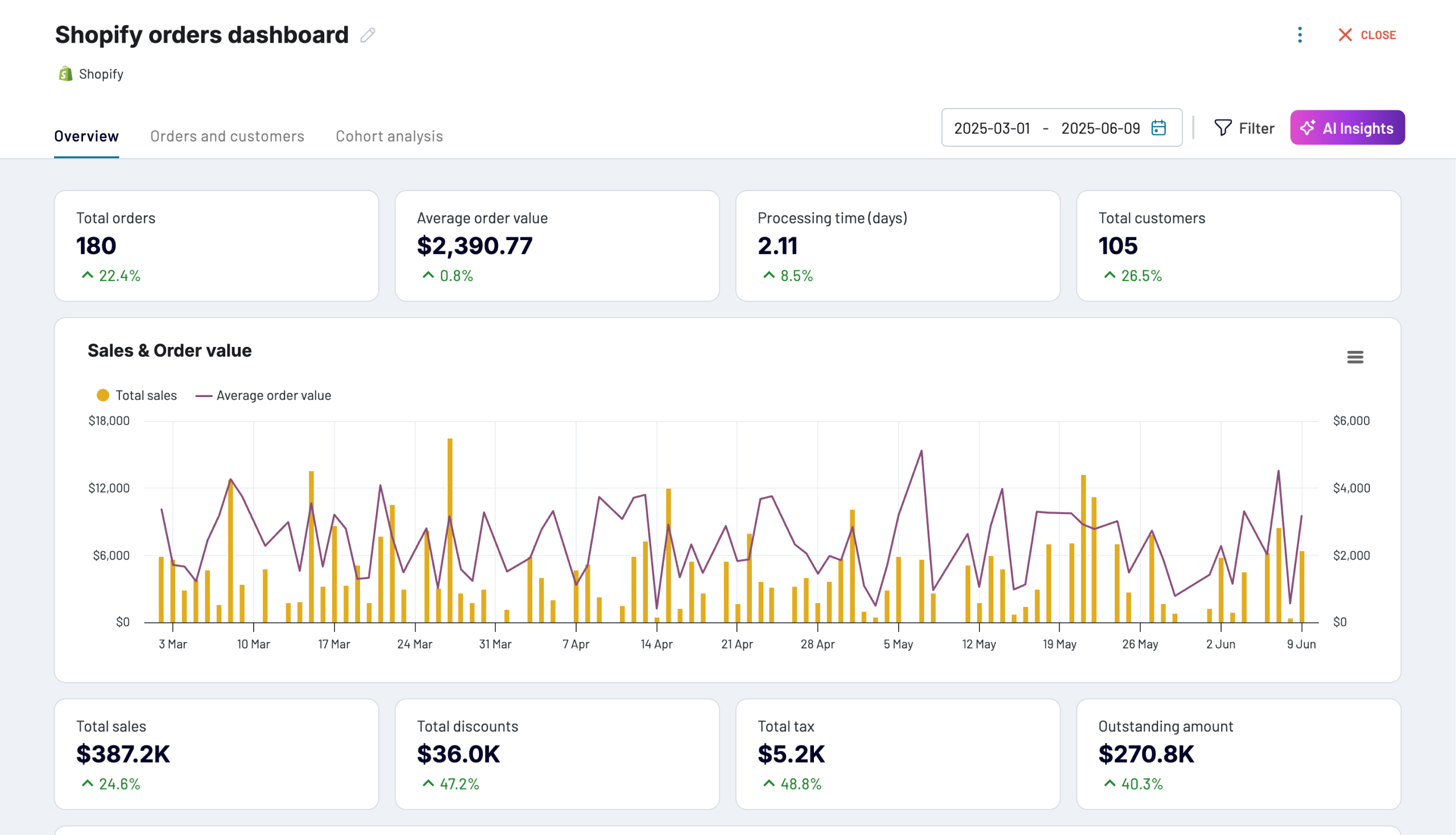Export data from Shopify to alternative destinations
Quick start with Ecommerce dashboards
No such template is available yet.
No worries. Our team will create a template that fits your needs, just tell us more
about your case. It doesn't cost you a penny 😉
Request a custom report
about your case. It doesn't cost you a penny 😉
What data you can export from Shopify?
Group:
-
Orders
-
Products
-
Inventory
-
Customers
-
Products with variants
-
Orders with line items
-
Orders with activities
-
Order fulfillments with line items
-
Orders with shipping lines
-
Orders refunds transactions
... and many more
Use Shopify connector to make your data analysis-ready in your destination app
What is a Shopify data connector all about?
The Shopify connector by Coupler.io is an out-of-the-box solution that automates exports of Shopify data. It allows you to load ecommerce data to various data destinations, including spreadsheets, data warehouses, and business intelligence tools. The primary use of the data connector for Shopify is to automate reporting. However, you can also consider it a backup solution if you connect Shopify to data warehouses like BigQuery.
The Shopify data connector is designed for sales and marketing professionals. So, you won't need any technical background or programming skills to make it run. With a few simple steps, you can turn raw sales data into a report and set a schedule for data refresh. As a result, you automate ecommerce reporting and extract valuable insights into your Shopify sales performance.
The Shopify data connector is designed for sales and marketing professionals. So, you won't need any technical background or programming skills to make it run. With a few simple steps, you can turn raw sales data into a report and set a schedule for data refresh. As a result, you automate ecommerce reporting and extract valuable insights into your Shopify sales performance.


Why use Coupler.io to collect your Shopify data?
Multiple destinations
The data connector for Shopify lets you automate reporting with the support of spreadsheet apps and BI tools as the destination. You can also load data to data warehouses for backups or advanced analytics.
Automated data refresh
The reports you load to the chosen destination can be easily automated with the Shopify connector. You only need to enable the data refresh and set the interval to update the data in the destination app.
Data blending
The Shopify connector can be enhanced by adding other data sources to create cross-application reports. You can combine data from Shopify with information from Google Analytics, ad platforms, and other apps you use.
Connect similar Ecommerce apps and get data in minutes
Frequently asked questions
Coupler.io offers a one-stop shop for collecting and organizing your Shopify data. With only one Shopify connector, you can turn raw ecommerce data from Shopify into a report using filters, calculations, and column management. The report can be supplemented with the information from other marketing, finance, and sales applications. You can then share the organized data by exporting it to a spreadsheet, dashboard, or table.
Save time by making your report or regular data export from Shopify automated. You won’t need to refresh the data manually every time, since the Shopify connector already has this capability by default. You can have your Shopify data refreshed at a custom frequency up to every 15 minutes.
The Shopify connector supports different data categories for export. Each of these ecommerce data types provide specific value to create meaningful reports.
The inventory data lets you manage inventory levels effectively and avoid overstocking and shortages. With product data, you will understand market trends and make informed decisions on product pricing. The customer data can help you tailor marketing strategies to enhance customer engagement and increase lifetime value.
The order data has the biggest representation in the Shopify connector. You can extract information about order fulfillment, line items, shipping lines, and refund transactions. With all these insights, you’ll be able to identify upselling opportunities, improve logistical operations, and increase customer satisfaction.



















































